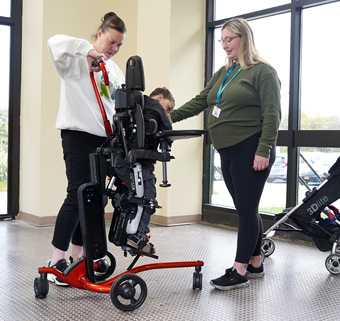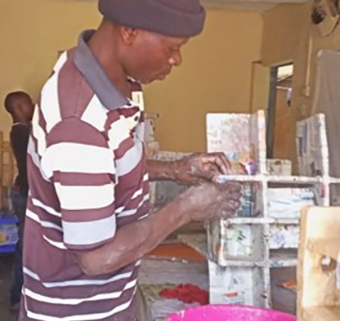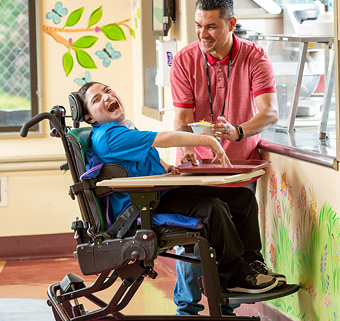Our Body, Gravity, and the New Discipline of Posture Care Management
| August 2018 Twenty-four-hour posture care management is quite new in North America, but its roots go back to the 1980s with foundational work occurring even earlier. Children and adults with dysfunctions of muscle tone, reflexes, muscle weakness and joint contracture have impaired movement and develop adverse postures as a direct consequence of their positioning relative to gravity. These can result in complications such as pelvic or rib cage asymmetries, scoliosis, hip dislocation, and other issues.
Twenty-four-hour posture care management is quite new in North America, but its roots go back to the 1980s with foundational work occurring even earlier. Children and adults with dysfunctions of muscle tone, reflexes, muscle weakness and joint contracture have impaired movement and develop adverse postures as a direct consequence of their positioning relative to gravity. These can result in complications such as pelvic or rib cage asymmetries, scoliosis, hip dislocation, and other issues.
Clinicians are increasingly recognizing the importance of positioning devices for posture care management. Development of this approach has changed policy and treatment interventions in many countries, to focus on positioning in all three orientations available to human beings - lying, sitting and upright (standing/walking.) These are the three postural positions relative to gravity in which we as human beings spend our daily lives.
As clinicians and seating and mobility professionals, we are keenly aware of adaptive positioning and mobility options in the seated and upright positions. But to date, while we Americans have spent much time on these last two orientations, we have spent relatively little effort on intervening effectively in the first and most basic orientation that human beings experience – lying. Our clients (as we ourselves) spend substantial hours of each 24-hour period sleeping or relaxing in unsupported positions. But for individuals with impaired movement, gravity reinforces their asymmetrical positions during these periods, which are generally longer periods than the time spent in supportive adaptive equipment or in therapy.
The reality is that sitting and standing posture are linked strongly with lying posture. Posture care management successes have shown that balanced lying in fact supports balanced sitting and standing. Therapeutic positioning in lying has enormous potential for addressing secondary complications while empowering families in a cost effective manner, as well as supporting success in active therapies.
Articles, resources and training in posture care management are available, although it is still in its pioneering stage here in the US. There is more to this powerful approach than just equipment. Are you intrigued? Read this in-depth article on Rehab Management’s website. And explore the Posture 24-7 website for resources and upcoming educational events to learn more…
Rehab Management Article:
24 Hour Posture Care Management: Supporting People Night and Day
Rifton Blog Article:
24 hour postural care management
Resources:
United States: Posture 24-7 (see Resources: Useful Materials for Bed Positioning)
Canada: Child Development and Rehabilitation (see: Positioning for Children GMFCS Levels IV-V)
Sleep Positioning Products:
United States (from UK): Jenx Dreama
United States: Symmetrisleep
United Kingdom: Symmetrikit
United Kingdom: Leckey Sleepform [Leckey in US via Ki Mobility]
Britain: Simple Stuff Works




